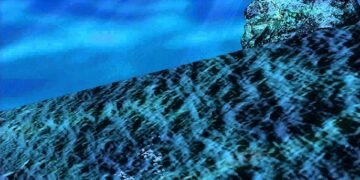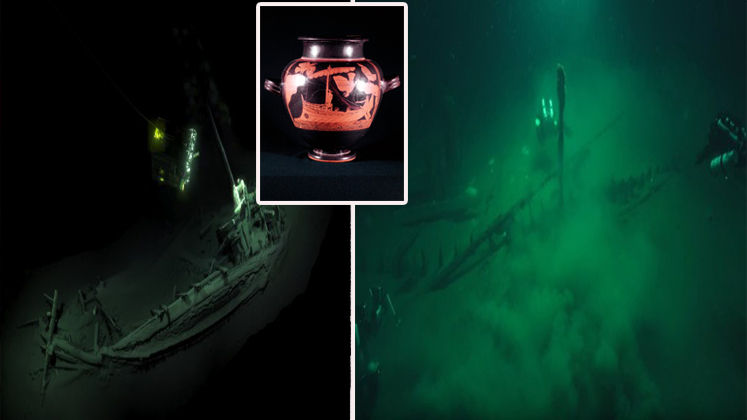For over two centuries, Oak Island, a small landmass in Nova Scotia’s Mahone Bay, has captivated treasure hunters with tales of pirate gold, the Holy Grail, or Templar secrets hidden in its infamous Money Pit. In 2025, startling discoveries—including stone pathways in the swamp and a mysterious gemstone on Lot 5—suggest that someone of great wealth visited the island long before its documented history. These findings have reignited debates: are we on the verge of unraveling the island’s secrets, or are we chasing shadows once again?
The Money Pit’s Origins: The 1795 Discovery
The saga began in 1795 when three teenagers—Daniel McGinnis, John Smith, and Anthony Vaughn—noticed a 13-foot-wide depression under an oak tree, with a pulley system and freshly cut trees nearby. Suspecting treasure, they dug, uncovering flagstones at 2 feet, followed by wooden platforms at 10, 20, and 30 feet. Word spread, and by 1804, the Onslow Company continued the excavation, finding platforms every 10 feet down to 90 feet, where they discovered a stone slab with carvings allegedly reading, “40 feet below, 2 million are buried.” Before further exploration, water flooded the pit to 60 feet, defying pumps and bypass tunnels. This flooding, along with coconut fiber (non-native to Nova Scotia) found in the pit, suggested sophisticated engineering, possibly to protect a valuable secret. Theories ranged from Captain Kidd’s loot to Templar relics, though skeptics argued the pit was a natural sinkhole in the island’s limestone terrain. The 1795 discovery sparked a treasure-hunting obsession that persists today.
Centuries of Expeditions
Over 200 years, Oak Island became a treasure-hunting epicenter. In 1849, the Truro Company found coconut fiber and charcoal at 86 feet but was thwarted by flooding. In 1861, the Oak Island Association’s industrial excavation ended in tragedy when a pump explosion killed a worker, fueling rumors of a curse requiring seven deaths before the treasure is revealed. By 2025, six deaths had occurred. Notable figures, including a young Franklin D. Roosevelt in 1909, joined the hunt, recovering tools but no treasure. In the 1930s, William Chappell’s team found wood, metal, and possible gold flecks at 153 feet, but funds ran out. In 1965, a tragic accident in Borehole 10X claimed four lives, including Robert Restall’s, as they explored man-made caverns. Artifacts like a 17th-century Spanish coin, parchment fragments, and a lead cross kept the mystery alive, despite geological arguments that the pit was a natural formation.
2025 Breakthrough: Swamp Pathways
In Season 12, Episode 15 of The Curse of Oak Island (aired March 11, 2025), the Lagina team uncovered a network of stone-lined pathways in the triangular swamp, a former cove from 800 years ago. Unlike the single stone road found in Season 8, this complex system suggested a transport network for heavy cargo, possibly treasure, from a dock to a vault. Core samples indicated saltwater flooding in the 1300s or 1400s, aligning with theories of medieval activity, potentially by the Knights Templar post-1307. A 15th-century wooden barrel fragment with stress marks and burn scars hinted at a ship’s cargo being hidden or destroyed.
The Gemstone Discovery on Lot 5
In the same episode, a high-quality, professionally cut gemstone was found on Lot 5, a half-mile west of the Money Pit. Unlike earlier finds (e.g., a 300 BC coin or 17th-century buttons), this gemstone, likely medieval, implied the presence of wealthy individuals—knights, pirates, or nobles. The discovery, alongside the swamp pathways, suggested deliberate activity on the island centuries before 1795, fueling speculation about Templar or pirate connections.
The Lead Cross and Templar Theory
A lead cross found in Smith’s Cove in 2017 gained new significance in 2025. Metallurgical dating placed it in the 12th or 13th century, and its design matched Templar relics from Portugal and France. Lead isotope testing linked it to a French mine tied to the Templars, who vanished with their wealth after their 1307 suppression. This artifact pushed Oak Island’s timeline back 300–400 years, suggesting pre-Columbian European activity and strengthening the Templar theory.
The Lagina Brothers’ Modern Quest
Rick and Marty Lagina, inspired by a 1965 Reader’s Digest article, purchased majority ownership of Oak Island in 2006. Using seismic scanning, ground-penetrating radar, and systematic drilling, they uncovered artifacts like the lead cross, human bones (one European, one Middle Eastern), and a Roman coin from 300 BC. Rick’s passion and Marty’s skepticism balance their approach, with millions invested despite flooding and skepticism. The swamp and Smith’s Cove, with its U-shaped dock structure, have yielded critical clues.
The History Channel’s Impact
Since 2014, The Curse of Oak Island on the History Channel has globalized the mystery, blending scientific rigor with narrative drama. Experts in archaeology, history, and geology analyze artifacts, while carbon dating and chemical analysis provide context. The show’s revenue funds advanced equipment, and its popularity attracts expert consultants and viewer theories. Critics argue it exaggerates findings, but it has elevated Oak Island to a legitimate historical inquiry.
Geological Debate
The Money Pit’s nature divides experts. Skeptics, like geologist Robert Dunfield, attribute it to natural sinkholes in the island’s limestone and anhydrite, with flooding from seawater. However, coconut fiber, worked wood, and engineered drains at Smith’s Cove suggest human design. Dr. Ian Spooner’s sediment analysis indicates the swamp was artificially modified centuries ago, supporting the theory of deliberate construction.
Looking Ahead
The 2025 discoveries—stone pathways, the gemstone, and the Templar-linked cross—have brought the Laginas closer to answers. Future plans include drilling a seismic-detected void near the cross, excavating Lot 5’s stone circle, and mapping the swamp pathways. Advanced ground-penetrating radar will create 3D subsurface models, and the show’s renewal through Season 14 ensures funding. Increased tourism and academic interest reflect the mystery’s growing legitimacy. While the ultimate secret—Templar treasure, relics, or documents—remains elusive, the Laginas seek historical truth over monetary gain. Oak Island continues to reveal just enough to sustain the hunt, keeping its final secrets unwritten.






















